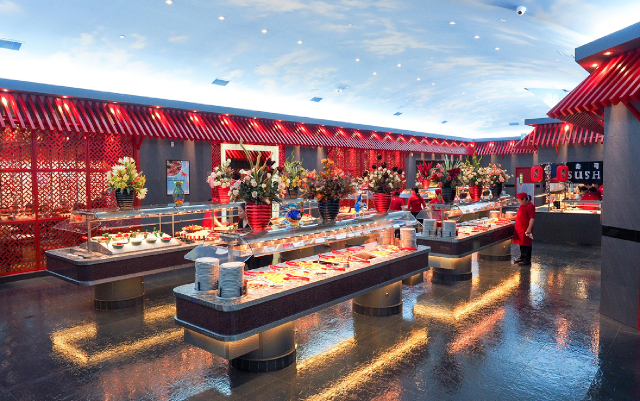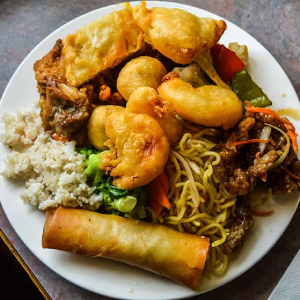We occasionally see stories about irate diners who’ve been kicked out of ‘all-you-can-eat’ restaurants for eating too much. They unfailingly howl, “You can’t do that! It’s ‘all-you-can-eat’!” But there are restrictions to that implied contract…
 The Mandarin Chinese Buffet in Ottawa – my go-to pig-out place.
The Mandarin Chinese Buffet in Ottawa – my go-to pig-out place.
But I’ve never been thrown out. Much less, banned!
Big eaters on small budgets have made buffet restaurants more popular than ever during the post-COVID era, as food prices skyrocketed by double digits in some years.
But that’s also thrown the concept behind buffet eateries into sharp relief.
How buffets work
As a business model, the buffet restaurant relies on the precise interaction of a number of prerequisites to succeed.
An inciteful article on MASHED explains: “All-you-can-eat buffets employ a specific […] strategy to increase the number of patrons in an establishment. Since a typical restaurant requires waitstaff to take orders and hand-deliver each plate of food, it can only manage a certain number of customers in a single night. Buffets, on the other hand, largely run on a self-service system and often feature dishes that are designed to be sharable. […] With easier food prep and fewer required workers, buffets can serve more meals to more customers while keeping labor costs low enough to make a profit.”
That model relies on some patrons eating less to counter the negative effects of folks who eat more. The two predilections usually balance each other out over time.
What’s happening?
More and more folks are resorting to buffets to fill their bellies. And a significant number of those bellies are large. That’s led to disputes between diners and proprietors about the etiquette and rules governing so-called ‘all-you-can-eat’ restaurants.
The bottom line
The Bottom line is clear: You can’t legally be kicked out of a buffet for eating too much. There’s an implied contract specifying it’s ‘all you can eat’. But the management can ban you from dining there again. That’s their prerogative. Along with other rules they may put in place, such as: You can’t take food home. That just makes sense.
Some buffet operators have recently added new rules to their service commitments. Such as penalizing you for serving yourself more than you can eat.
Regardless of what the rules say, they must be clearly stated to diners before they are seated, and let loose at the buffet. That’s why almost all buffet restos have signage at their entrances listing their rules.
Safeguards already in place
Buffet resto operators usually take precautions to limit losses from overeating customers. These commonly include placing cheaper, more-filling dishes at the front of the buffet display. You’ll probably also notice that the plates provided at most buffet establishments are smaller than those you use at home. Or commonly see at regular sit-down restaurants. That’s so you’ll ‘voluntarily’ restrict the amount of food you serve yourself. Same with soup and dessert bowls. But if you REALLY do want more of something, you can always go back and get it.
Alcoholic beverages are usually made available over and above the buffet flat fee. Some restos also offer dessert ‘packages’ as extras, now.
And buffets are increasingly enforcing a 2-hour limit per visit, to cut over-eaters off at the pass.
My take
House rules and legal precepts all weighed and taken into account, you can, indeed, be kicked out of an ‘all-you-can-eat’ buffet. Or even banned.
But if the foregoing post makes the resto-diner relationship seem adversarial, that’s a shame. My bad. I see the situation as one which, when it’s performing at its best, is cheerfully cooperative…
~ Maggie J.

